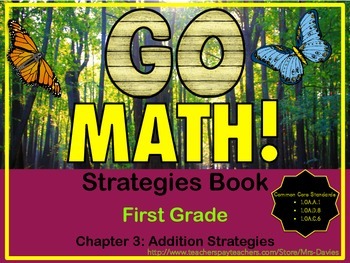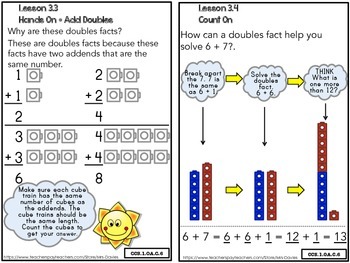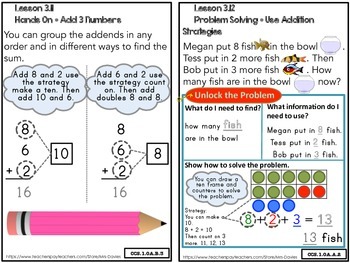Go Math! First Grade Chapter 3 Addition Strategies Reference Book
- PDF
Description
Are you using GoMath! in your classroom? Looking for a reference guide of the GoMath! strategies for the first grade curriculum? If so, you have found the right resource! Go Math! First Grade Chapter 3 Addition Strategies Reference Book was made for teachers looking for a guide for students to reference to help them recall and apply the problem-solving strategies of the GoMath! math curriculum. GoMath! Strategies Book is practical for students who cannot access GoMath!’s online tools.
This product contains half page presentation of the strategy modeled with steps and instructions on how to solve problems. Each lesson is labeled with the common core standard covered. Every lesson of the chapter is included. Each page except for cover pages are in color. Pages still look great when printed in black and white.
Send a printed copy home the GoMath! Strategies Book as an easy and convenient way to communicate to parents the strategies being taught in class. Parents can then refer to the strategies in the GoMath! Strategies Book to assist their child with homework assignments.
Other classroom uses include use as a notebook activity. Students cut and paste each lesson in their notebooks as you introduce it. Students then refer back to it when completing practice examples. Print out this product and put it onto book rings as an easy and accessible reference tool to implement in your classroom.
Refer your student’s tutor to this resource to inform them of the strategies students need to learn to solve problems as well as to study for chapter tests or performance tasks. This product is great for differentiation in general education, inclusion class, small group work, and for working with special education students.
This product includes:
-Full size cover page.
-Half size cover page for making booklets or placing strategies onto book rings.
-Table of Contents
-The top of each page is labeled with lesson number and title.
-Half page presentation of each lesson in color.
-Each lesson labeled with common core standards.
-Each page presented on 8 ½ x 11 pages with horizontal orientation.
*Single purchase of this product is for use by one teacher for one class. For use for another class or by another user, additional licenses are required.
Save money. Buy the bundle:
➼Go Math First Grade Strategies Reference Book Bundle
◈ ◈ ◈ ◈ ◈ ◈ ◈ ◈ ◈ ◈ ◈ ◈ ◈ ◈ ◈ ◈ ◈ ◈ ◈ ◈ ◈ ◈ ◈ ◈ ◈ ◈ ◈ ◈ ◈ ◈ ◈ ◈ ◈ ◈ ◈ ◈ ◈ ◈
➯ Be sure to follow my store to be alerted of new products. >> CLICK HERE
➯ Don't forget to leave feedback. You will receive TPT credits that can be used on future purchases!
Tags: Go Math, Go Math!, GoMath, GoMath!, math, common core, strategies, first grade, 1st, study guide, parents, tutor, test prep, test, chapter test, performance task, lesson, printable, algebra, problem solving, place value, addition, subtraction, base-ten, numbers, ELL, ESL, Special Education, RTI





